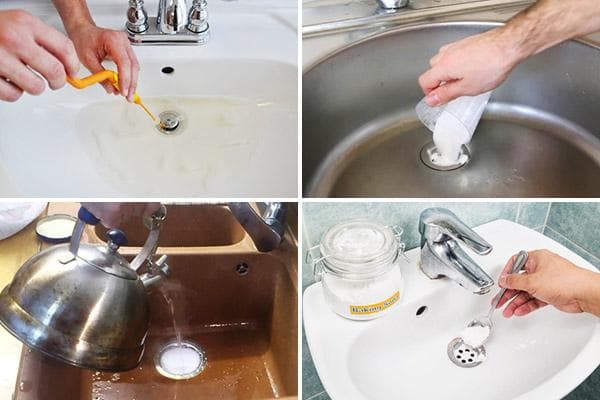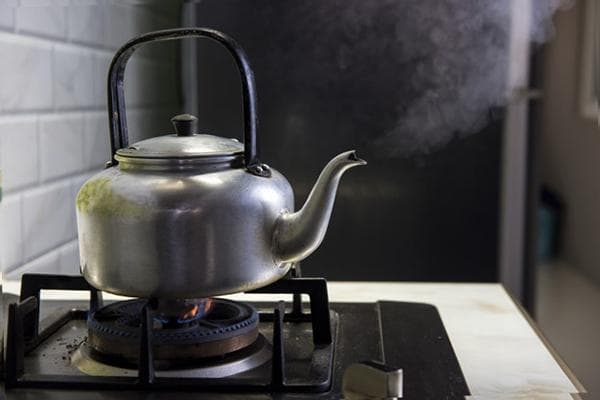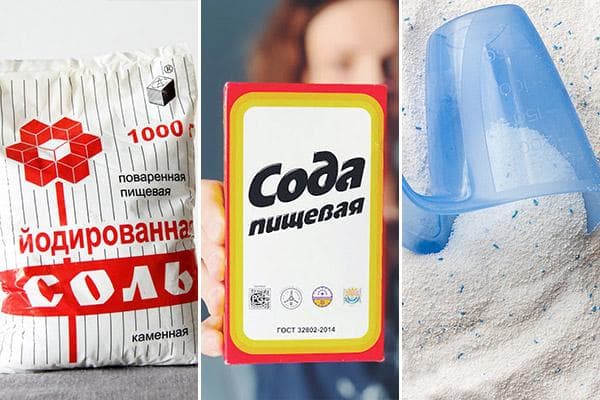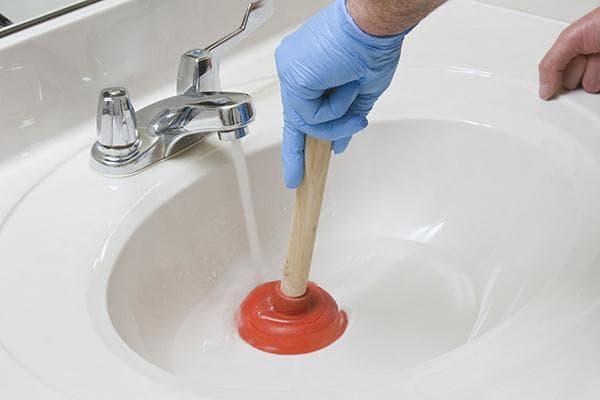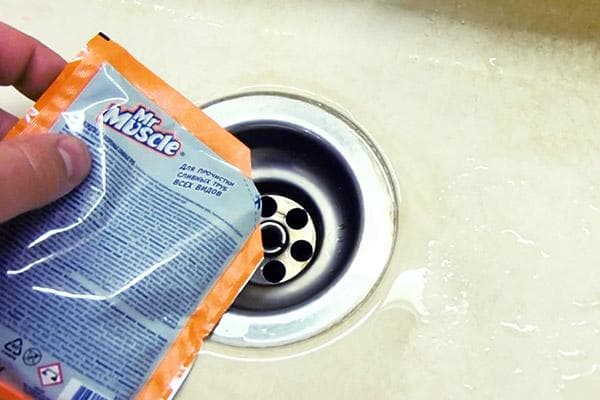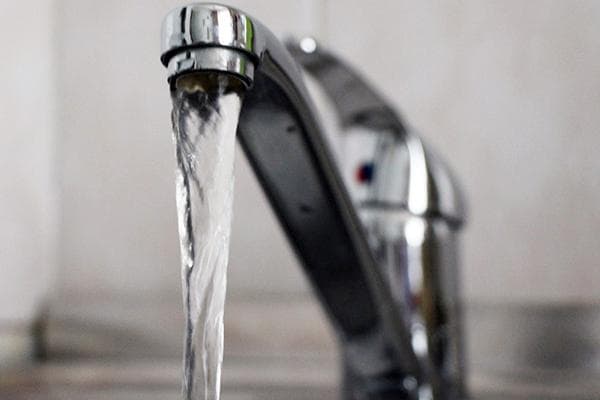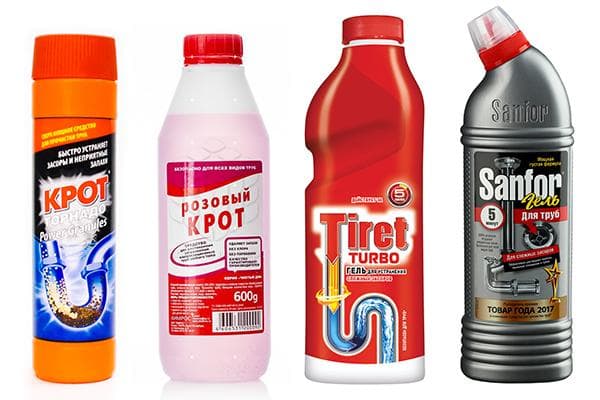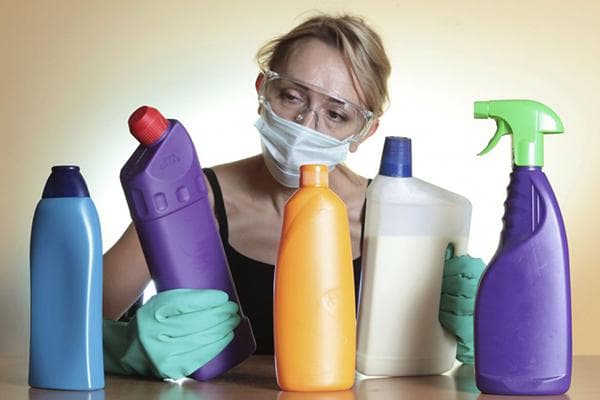How to unclog a sink: working options using improvised means
Even the most careful owner can encounter such an unpleasant situation as a clog in the sink. When it occurs, the water does not go down the drain at all or drains very slowly. It is quite possible to correct the situation yourself without calling a plumber.
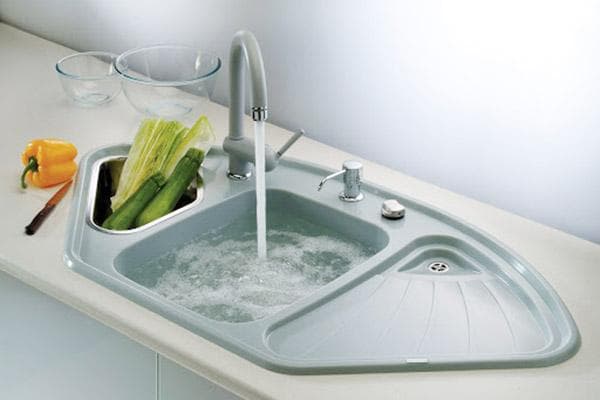
Why is this happening?
The reasons for the poor performance of the sewage system can be different. This:
- Incorrect operation. If you constantly wash off leftover food and drain fat from pans into the sink, then after a while a clog will certainly form. To prevent this situation, it is recommended to install a mesh on the drain so that large particles of debris are not washed into the siphon.
- Long-term operation. Even with careful use, droplets of fat, hair, and soap suds get into the drain, which are partially retained on the walls of the pipeline. Over time, the layer of sediment becomes thicker, and it begins to interfere with the passage of liquid. If metal pipes are installed, the cause may be rust that forms on the walls during long-term use.
- Incorrect installation. If mistakes were made when assembling the drainage system, blockages will occur regularly. This happens if pipes of a smaller diameter are used or the pipeline is laid with an incorrectly selected slope angle. In this case, only dismantling and proper assembly will help get rid of frequently occurring emergency stops.
Cast iron pipelines become clogged more often than plastic ones. The reason is the rough surface of the inner walls: unevenness helps to retain small debris, it gradually accumulates, blocking the lumen of the pipeline.
All types of blockages can be divided into two groups:
- Operational. In this case, the passage in the pipeline narrows gradually, this can be noticed and measures can be taken to prevent the system from completely stopping.
- Emergency. They occur when a large object enters the system. For example, a piece of plastic bag or piece of fabric. It closes the lumen, making drainage impossible.
When eliminating emergency blockages, only mechanical methods are effective. The object that has blocked the lumen of the pipe must be removed or pushed further along the pipe into a wider part of the pipeline.
It is easier to eliminate operational blockages, especially if you do not wait until the pipe lumen narrows so much that water cannot move through the pipeline.
Removing blockages using improvised means
If you notice that water has begun to stagnate in the sink, then measures should be taken immediately. A small blockage in the kitchen can be eliminated at home using simple methods using available tools.
Boiling water
This measure is best used to prevent blockages in the kitchen. Hot water washes away fatty deposits, preventing them from accumulating on the walls of the pipes.
If the pipes are cast iron, then you can periodically pour 2-3 liters of boiling water into the sink. After 20–30 minutes after this, you can run water to further flush the system.
Plastic pipes should be washed with water at a temperature of 60–70 degrees. To rinse, you can open a hot water tap, directing the stream into the drain hole.
Salt, soda, washing powder
Flushing with boiling water when a blockage occurs is not enough. To increase the effectiveness of the measures taken, detergent additives are added to the water.
From available means you can use:
- 1 cup soda ash (washing soda);
- 1 glass of salt, preferably coarsely ground;
- a mixture of half a glass of salt and the same amount of soda (baking or washing);
- 0.5 cups of any washing powder.
Any of the listed products must be diluted in a glass of hot water and pour the prepared solution into the drain of the sink that is clogged. Close the hole with a stopper or a wet rag. After half an hour, remove the plug and run hot water to thoroughly rinse the siphon and pipes.
Neutralization reaction
You can quickly clear a small blockage using a neutralization reaction between acid and alkali. To carry out the reaction, baking soda and table vinegar (9%) are used:
- Carefully pour 120–150 g of soda into the drain hole.
- Then quickly pour the same amount of vinegar there. After this, dirty foam will begin to come out of the drain. To avoid having to wash the sink for a long time, it is better to immediately close the hole in the sink with a stopper.
- After 20–30 minutes, remove the plug and run hot water to flush the pipes.
During the reaction between baking soda and vinegar, foam is released, which dissolves fat deposits well, so this method is effective in removing small blockages.
Vacuum cleaner
An unusual way to remove blockages can be used if you have a vacuum cleaner at home with a blowing function. That is, it should not draw air into itself, but supply it with a directed flow.
To remove the blockage, you need to wrap the vacuum cleaner pipe without a brush with a rag so that it fits tightly into the drain hole. After this, turn on the device and let it work for a while. A jet of air can break up the plug that has formed the blockage and push parts of it further down the pipe. After purging, you need to rinse the system with water, preferably hot.
Using a plunger
It is very useful to have a plunger in the household - a special device for removing small blockages in sinks.
To clean a sink drain with a plunger, proceed as follows:
- if there is an overflow hole in the sink, it must be tightly plugged with a stopper or a wet rag - this is necessary to block the passage of air through this channel;
- fill the sink with some water;
- install the plunger so that its rubber part completely covers the drain hole;
- using the handle, you should make several pumps (each movement creates a push of air, and these pushes should destroy the cork);
- After working with the plunger for a couple of minutes, you need to remove it and open the water;
- if the water continues to drain too slowly, the operation should be repeated;
- when the water starts flowing normally, you will need to open the tap and flush the system.
If your kitchen has a double sink, you will need to use two plungers. Moreover, they need to work simultaneously. This will increase the strength of the air flow. If there is no second plunger, the drain hole of the second sink must be tightly plugged to prevent air from escaping.
Cleaning with a cable
A serious blockage cannot be removed using improvised means or a plunger. In this case, mechanical cleaning is used using a plumbing cable.This equipment helps to break through the plug, as well as remove a large object from the pipe that has become an obstacle to the passage of water.
To clean a sink in an apartment, it is enough to use a household cable 3 meters long. Some models are additionally equipped with attachments to improve cleaning quality. This could be a brush-brush, which cleans the pipe walls well, or a hook, which helps remove large foreign objects from the system.
It is more convenient to remove blockages using a cable together. To get rid of the blockage, you need to do this:
- Remove the siphon. This part, as a rule, also becomes clogged, so it needs to be cleaned and rinsed with hot water. It is not recommended to try to push the cable through the siphon, since the plastic structure can be easily damaged.
- The working end of the cable is lowered into the hole in the pipe. One of the workers constantly turns the handle, creating a rotational movement. The second one pushes the cable through the pipe.
- When the cable hits a blockage, you will need to perform a back-and-forth movement, this will help break up the blockage, breaking it into small pieces.
- After the blockage has been removed, the cable is removed, washed and dried. The siphon is installed in its original place and hot water is turned on to flush the system.
Often, to remove the blockage, it is enough to remove and wash the siphon, since it is in it that deposits usually accumulate, obstructing the passage of water. In this case, you can do without using a cable.
Anti-clog chemicals
You can remove operational blockages using commercial chemicals. Cleaning products are sold in hardware departments. These products contain acids or alkalis and are available in different forms:
- powder;
- solution;
- gel.
Gels are considered the most effective: they are quite thick, so they do not flow, but are evenly distributed along the walls of the pipes, thoroughly cleaning them of sediment.
The industry produces universal preparations for cleaning sewers and special products. The latter are chosen depending on what exactly clogged the sink. For kitchen sinks, it is recommended to purchase preparations aimed at dissolving fat. And for the bathroom, products that dissolve hair and soap scum will be more effective.
Before use, you must carefully study the instructions. Most modern products can be used with any type of sewer pipe, but there are options that are not recommended for use on cast iron.
The method of application of the product depends on the chosen form. If it is a powder, then it is either poured into the drain in dry form, and then the specified amount of hot water is poured into it, or it is first dissolved in boiling water and poured into the sink. The solution or gel is carefully poured into the drain.
After this, you must wait the time specified in the instructions. As a rule, this is 40–60 minutes. This is necessary so that the active substance has time to dissolve the deposits on the walls.
When the exposure time is over, open hot water for at least 10–15 minutes to wash off any remaining drug and dissolved deposits.
It is not recommended to increase the exposure time specified in the instructions. Exposure to aggressive substances for too long can destroy pipes.
Pipe cleaners are produced by many manufacturers of household chemicals. Most popular brands:
- "Mole";
- "Mister Muscle";
- "Sanox";
- "Sanfor".
Since it contains acid and alkali, it is better to work with the preparations with gloves so as not to irritate or even burn the skin. In addition, it is advisable to open the window to ensure ventilation of the room.
conclusions
To avoid having to deal with a situation where water completely stops flowing from the sink drain, it is recommended to periodically carry out preventive cleanings. The easiest way is to rinse with boiling water. Approximately once every 1–2 months, you can preventively flush the system using chemicals.
But such methods will not help if the blockage is caused by a large foreign object entering the system. In this case, only mechanical cleaning methods are effective.
If none of the above methods help, then you need to call a plumber. Most likely, the blockage has formed deep in the pipe, and it is not possible to destroy it without the use of professional tools.
